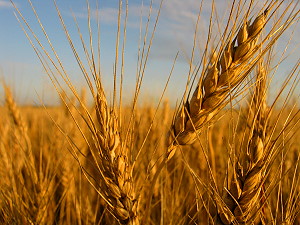 Crop Report Prepared by: Manitoba Agriculture, Food and Rural Initiatives GO Teams & Crops Knowledge Centre September 4, 2012 |
Crop Report Prepared by: Manitoba Agriculture, Food and Rural Initiatives GO Teams & Crops Knowledge Centre September 4, 2012 |
Northwest Region
Harvest progress throughout the Northwest Region continued with above seasonal daytime temperatures and drying conditions. Cooling nights with a few overnight periods of dew only slightly delayed early morning combining starts. Occasional periods of high winds have caused canola swaths to move and pile up with some localized losses due to shattering. Soil moisture levels are beginning to reach lower levels, especially on the lighter texture or better drained soil types.
Harvest of all seeded acres is 75 to 80% complete on a regional basis. The most advanced area is the southeast sector where only later seeded cereals and canola remain, along with the maturing hemp, soybeans, buckwheat, flax and corn silage acres. The Roblin, Swan River and The Pas areas are progressing well; however, the greater regional portion of unharvested acres reflect later seeding and crop development delays due to early growing season and excess moisture challenges. Widely variable harvested crop yield reports continue; bushel weights and quality are average but variable as well. Regional averages are around the 45 to 50 bu/acre for spring wheat, barley yields are 44 to 50 bu/acre and oat yields are 85 to 90 bu/acre.
Approximately 65 to 70% of canola is combined and around 5% of canola remains to be swathed. The regional canola yield is averaging 25 to 27 bu/acre with a range from 18 to 50 bu/acre.
Post-harvest field tillage work is more advanced in the south and eastern sectors where more combining is completed. Some pre-harvest applications are still underway through the northwest sectors.
Across all areas, good quantities of straw continue to be baled and removed from fields in good condition. Some forage is being taken as a late second cut. There are concerns of localized shortages reported from those areas which had excess moisture issues and previous lake flood effects on production. Silage corn harvest has not begun. Pasture conditions are declining under continuing dry fall conditions.
